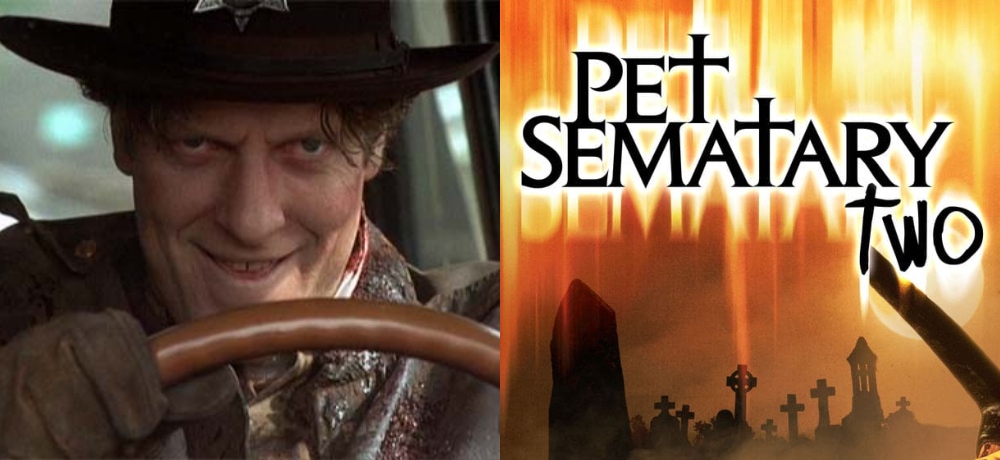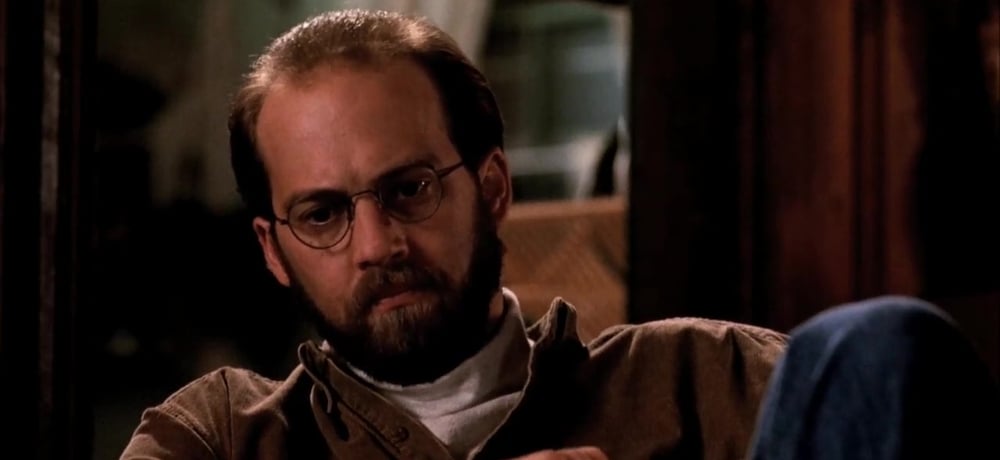


Director Mary Lambert cut her teeth on a lot of big-name music videos throughout the ’80s, including Madonna, The Eurythmics, Chris Isaak, and Janet Jackson. But her big splash in the horror world came in 1990 when she adapted perhaps one of Stephen King’s darkest novels, Pet Sematary. Lambert leveraged melodrama in the original film to explore the dark places we go in the midst of grief. But for the 1992 sequel, Lambert swaps out an operatic tone for something grungier, meaner, funnier, and, dare I say it, better?
When the original Pet Sematary pulled in $57.1 million off an $11.5 million budget, Paramount promptly chomped at the bit to produce a sequel. Although King had written the screenplay for the first film, he passed on coming up with something for a sequel as he got the sense that a follow-up would just tell the same story all over again. Lambert had an idea to continue the story by following Ellie in the aftermath of her family’s (multiple) deaths, but Paramount had other plans, as they had their eyes on Edward Furlong, who had just made a splash of his own as John Connor in Terminator 2.
The film follows Furlong as Jeff Matthews, who moves into Ludlow with his dad, Chase (Anthony Edwards), after witnessing his movie star mom, Renee (Darlanne Fluegel), get killed in a brutal accident on a film set. Needless to say, Jeff’s time in Ludlow is not great. As if just losing his mom and uprooting from his home weren’t bad enough, he’s in town for about 15 minutes before he’s targeted by local bully Clyde (Jared Rushton). When he befriends Drew (Jason MacGuire), things take a turn for the even worse when local sheriff and Drew’s abusive stepdad Gus (Clancy Brown) kills Drew’s dog Zowie, prompting the boys to try burying the late canine in the titular sematary.
I remember talking about Pet Sematary Two on an episode of Corpse Club and making the off-handed comment that the sequel is sort of like what you would get if the original film had died and you buried it in the pet sematary. I was playing it as a goof at the time, but the more I think about it, the more I think it’s a pretty apt description. Even with as dark as the original is, the sequel takes all of those narrative beats and distorts them into something even uglier.
Take, for instance, the Matthews’ catalyst for moving to Ludlow. In the first film, the Creeds move to Ludlow following opportunity as Louis gets a job as a doctor at the local college. The Matthews, however, are pushed there by Renee’s death, seeking refuge from Los Angeles in the town where Renee was raised. And when they arrive, rather than being greeted by Jud Crandall’s warm, folksy charm, they get Gus, who carries a similar Maine accent, but trades in the warmth for an overdeveloped sense of authority.
Even the impetus for using the pet sematary this time around is twisted. Sure, Drew’s desire to resurrect his dog mirrors the misguided grief from the original, but the first human resurrected is Gus after an undead Zowie rips his throat out. When the boys resurrect Gus, they aren’t motivated by affection so much as fear of what might happen if people found out about his death.
And not only are the narrative beats twisted, but the general feel of the movie is so much meaner than Pet Sematary, which is no small feat considering the original features a baby getting killed by a tanker truck. But in the sequel, the evil of the pet sematary seems to have permeated Ludlow similarly to how Pennywise’s evil corrupted the town of Derry in another of King’s well-known tales.
Case in point, Jared Rushton seems to be reveling in playing against type after previously portraying lovable scamps in Big and Honey, I Shrunk the Kids. As Clyde, Rushton leans into any and all bully tropes as he inexplicably decides to go in on a kid whose mom literally just died. And the film doesn’t seem particularly interested in exploring any kind of sympathetic backstory for Clyde. He’s just an asshole.
The same can be said for Gus, and we all know that Clancy Brown can play a bastard with the best of them. But here he gets an opportunity to play it in two different flavors. The first is a humorless, self-important lout who, like Clyde, we never really learn about in terms of his motivations for being so damn abusive toward Drew, beyond perhaps the resentment he has towards him for getting in the way of his relationship with Drew’s mother, Amanda (Lisa Waltz).
His post-resurrection iteration is a lot more interesting, though. On one hand, the sematary has made a bad guy much, much worse. Almost immediately after being brought back, he sexually assaults Amanda, and by the end of the movie he’s murdered Drew, Amanda, and even Clyde in a delightfully awful gag involving a dirt bike. But more interesting is the fact that part of how Gus comes back “wrong” is that, unlike his living counterpart, he has something of a twisted sense of humor even as he’s doing all these awful things.
In fact, there’s a wicked sense of humor that threads through the entire movie in a way that seems very deliberate on Lambert’s part, and serves as a direct response to the earnestness of her first film. Even the soundtrack has a warped personality to it, featuring the type of angsty personality you’d expect from early ’90s alternative rock. That there’s a track simply titled “Shitlist” should give you an idea of what to expect.

But in a sea of nihilism, Lambert does give us one lifeline in a perfectly cast Anthony Edwards, who as Chase serves as the film’s only bastion of anything resembling warmth and sincerity. This is a guy who’s trying to comfort his son and establish a veterinary practice in a new town while clearly dealing with his own grief. Plus, on top of all that, he has to navigate the discovery that animals and people are being brought back from the dead. He provides just enough for the audience to latch onto, even as he suffers his own encounters with the film’s sick sense of humor in the form of a dream sequence where his subconscious intertwines Renee and Zowie in some interesting ways.
While the original Pet Sematary may have lacked something in subtlety, Lambert’s sequel fires subtlety out of a cannon straight out to sea in a way that works to the film’s benefit. In a way, King was right when he predicted this sequel’s narrative beats would mirror those of the original: animal/person dies, gets buried in pet sematary, comes back wrong. But by taking such a wild pivot in tone, Lambert made a movie that seems wholly original and proves that in terms of the franchise, dead didn’t have to be better.